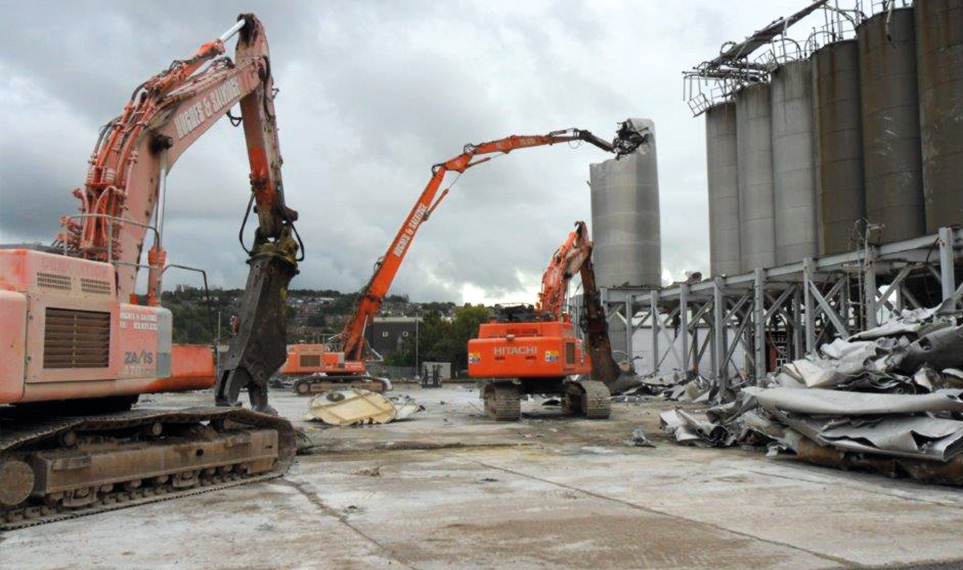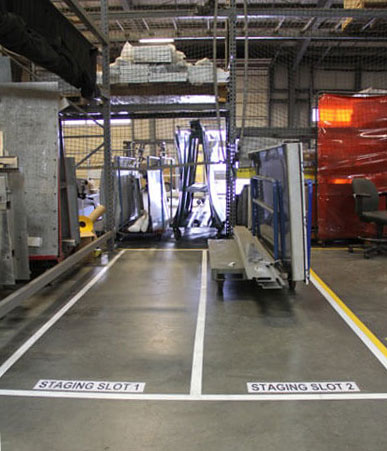
The Safety Measures Involved in Factory Demolition Projects
Factory demolition is a complex and dangerous process that requires a high level of expertise, planning, and safety measures to be in place. The safety of workers and the general public is of utmost importance during any demolition project, especially when it comes to large-scale industrial facilities such as factories. The safety measures involved in factory demolition projects play a crucial role in ensuring the project’s success and minimising the risk of injury or damage to property and the environment.
1. Site Survey
The first step in any factory or partial demolition project is to conduct a comprehensive site survey to assess the condition of the building, identify any hazardous materials that may be present, and determine the best approach for demolition. Workers use the survey results to create a detailed demolition plan that outlines the sequence of events, safety protocols, and procedures for removing hazardous materials.
2. Perimeter Fencing
One of the most important safety measures involved in factory demolition projects is the establishment of secure perimeter fencing and access control. This helps to keep the public and workers safe by preventing unauthorised entry into the demolition site and controlling access to the area. Workers must post signs around the perimeter to warn of the dangers and risks associated with the demolition site.
3. PPE for Workers
Another critical safety measure is using personal protective equipment (PPE) for all workers on the site. Demolition companies must provide hard hats, safety glasses, protective footwear, earplugs, and high-visibility clothing. Workers undergo training on the proper use and maintenance of PPE to ensure maximum protection.
4. Heavy Equipment Measures
The use of heavy equipment such as cranes, bulldozers, and demolition robots also requires strict safety measures to be in place. All equipment is subject to regular maintenance and inspection to ensure that it is in good working condition and meets safety standards. Heavy equipment operators must also undergo proper training and have certification to operate the machinery for factory demolition in Australia.
5. Protection from Hazardous Material
One of the most significant safety risks associated with factory demolition projects is the presence of hazardous materials. These can include chemicals, asbestos, and other toxic substances that can pose a risk to workers and the environment. Before demolition begins, these materials need identification, containment, and proper disposal to minimise the risk of exposure. In some cases, the removal of hazardous materials may require special expertise and equipment and may take place before the demolition begins.
6. Dust Suppression
Another critical safety measure during factory demolition projects is using dust suppression techniques to reduce the amount of dust and debris generated during the demolition process. It helps minimise the risk of respiratory problems for workers and the surrounding community, as well as protect the environment. Dust suppression techniques can include the use of water trucks, dust suppression sprays, and air filtration systems.
Various dust suppression methods are useful during a demolition project, including:
- Wetting down surfaces: This involves spraying water on demolition materials and surfaces to reduce the amount of dust generated.
- Using dust suppression products: There are various chemical products available that can be sprayed on demolition materials to reduce dust.
- Enclosing the demolition site: Building a physical barrier around the demolition site can help to contain dust within the site.
- Using vacuum systems: Vacuum systems can be used to remove dust generated during demolition activities.
- Installing dust suppression systems: Dust suppression systems can be installed in the factory to control dust emissions during demolition activities.
7. Monitoring Equipment
The use of monitoring equipment such as gas detectors and air quality monitors is also important during factory demolition projects. Workers use this equipment to monitor the levels of hazardous gases and pollutants in the air and to detect potential risks to worker safety and the environment. In the event of a gas leak or other hazardous situation, workers have training on the proper procedures for evacuation and emergency response.
Some examples of monitoring equipment that may be used include:
- Air quality monitors measure levels of dust, fumes, and other air contaminants.
- Noise monitors to measure and control levels of construction noise.
- Vibration monitors to detect and control potential structural damage caused by heavy machinery and excavation.
- Gas detectors monitor for hazardous gases such as carbon monoxide, nitrogen oxides, and others.
- Radiation monitors detect and control exposure to radiation in case of the presence of radioactive materials.
8. Regular Communication
Finally, regular communication and training for workers are essential for maintaining a safe work environment during factory demolition projects. Workers undergo training on the demolition plan, safety procedures, and emergency response procedures and get regular updates and reminders about the importance of safety. They can conduct regular communication in the following manner:
- Conducting a Hazard Assessment
- Establishing Safety Zones and Barriers
- Proper Personal Protective Equipment (PPE)
- Control of Hazardous Substances
- Use of Heavy Equipment and Machinery with Operators Trained in Safe Use
- Emergency Preparedness and Response Plan
- Regular Safety Inspections
- Air Monitoring for Dust and Fumes
- Proper Disposal of Debris and Waste
- Traffic Management and Control
- Training for Workers and Supervisors
- Safe Excavation and Trenching Procedures.
Conclusion
The safety measures involved in factory demolition projects are essential for ensuring the project’s success and protecting the health and well-being of workers and the surrounding community. These demolition services measures include site surveys, perimeter fencing and access control, personal protective equipment, heavy equipment operation, hazardous materials removal, dust suppression, monitoring equipment, and worker training and communication. By following these safety measures, demolition contractors can minimise the risk of injury or damage and ensure the success of their projects.
If you wish to learn more about factory demolition or require such services, contact Merhi Group and speak to their experts today!







